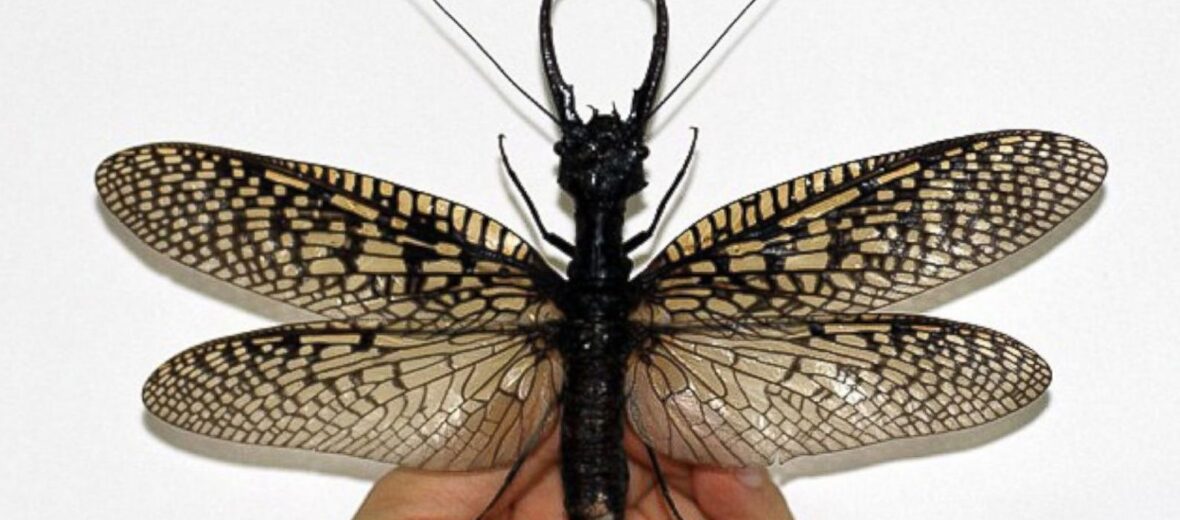
Enter the stuff of some people’s nightmares… the giant dobsonfly. This is considered to be the largest flying insect in the world. See below for the stats. These giants can be found in China and eastern Asia. Other species of dobsonflies can be found on every continent, sans Antarctica. They spend most of their lives as larvae and pupae. The adults emerge solely to reproduce, then they die. These enormous critters can be as large as a human head! Yep, that’s a thing you can’t unread.
First the Stats…
Scientific name: Acanthacorydalis fruhstorferi
Length: Up to 5 inches
Wingspan: Up to 8.5 inches
Lifespan: Up to 3 years, as pupae | Up to 10 days, as adults
Now on to the Facts!
1.) Their mandibles can be up to 2+ inches long and are used in battle, with other males, for breeding rights.
2.) Fishermen will sometimes use the larvae or pupae as bait while fishing.
3.) The hatchlings that emerge from the eggs are called hellgrammites.
4.) When the hellgrammites are ready to move from the water to land and begin their final metamorphosis into adults, they will dig a cell in the soil. They will shed their exoskeleton and then a few days later pupate again into their final adult form; digging their way out of the cell to look for a mate and haunt your dreams.
5.) The female’s egg masses can be damaging to the leaves of plants and trees, so dobsonflies are considered a pest by some. But they are actually beneficial insects as the pupae eat other insects.
But wait, there’s more on the giant dobsonfly!
6.) Dobsonflies are nocturnal (active at night).
7.) In the larval, aquatic stage, they prey on mayflies, stoneflies, caddisflies, and chironomid midges. So, for this reason, they are considered beneficial, as they keep the populations of these other insects under a degree of control.
Did you know…?
The larvae of the dobsonfly can deliver a painful bite that can draw blood.
8.) The dobsonfly displays phototaxis (attraction to light). So they can often be found around illuminated porches.
Now a Short Giant Dobsonfly Video!
Also, check out the Critter Science YouTube channel. Videos added frequently!
Want to suggest a critter for me to write about? Let me know here.



